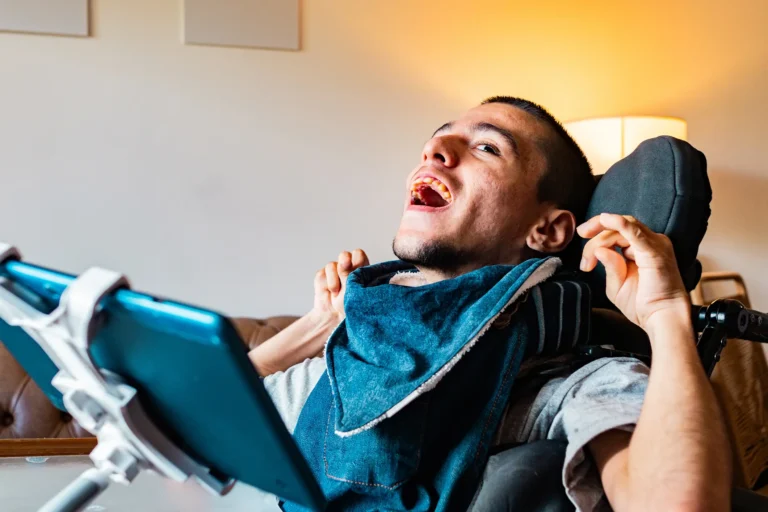The NDIS has released new guidance about short term respite, previously called short term accommodation.
The name change to Short Term Respite (STR) helps make the purpose of this support clearer. It’s about meeting your everyday needs while giving you and your informal supports (such as family or friends) some time apart to rest and recharge.
Here’s what you need to know about what’s changed, who it applies to and how it works.
What is NDIS short term respite?
Short term respite is an NDIS support that gives you a comfortable and safe place to stay for a short time when the people who usually help you (your ‘primary informal supports’) are unavailable or need a break.
It provides temporary accommodation and ensures you still get the support you need with daily living – for example, help with personal care or taking part in your usual routines.
You might also use short term respite if spending some time away from your usual supports helps you work towards your NDIS goals, for instance, building independence or trying new experiences.
Your primary informal supports are the people in your life who regularly provide unpaid help related to your disability, such as family members, friends or carers.
Who is eligible for short term respite?
Short term respite care is generally available for people on the NDIS who:
- Live with their primary informal supports or
- Receive regular daily support from them for more than six hours a day.
The NDIS also considers other factors when deciding if short term respite is reasonable and necessary. You may be eligible if at least one of the following applies to you:
- You receive high intensity supports, such as complex bowel care, enteral feeding, tracheostomy or ventilator management, urinary catheter care or complex wound management
- You have intensive or complex behaviour support needs
- You need specialist behavioural intervention support
- You live in an area where alternate in-home supports aren’t widely available or accessible
- The wellbeing of your primary informal supports or their ability to keep providing care is at risk (for example, due to ageing or illness)
- Your primary informal supports have additional caring responsibilities, such as caring for young children or other family members with disability support needs.
For children, it’s only funded when:
- Disability support needs go beyond what’s typical for the child’s age and
- It helps the family continue in their caring role.
You’re unlikely to be eligible for short term respite if:
- You live alone and don’t have informal or drop-in support
- You receive more than 18 hours of paid supports per day at home
- You’re not taking a break from your primary informal supports
- You’re waiting for home modifications to be completed
- You live in supported independent living (SIL)
- You have individualised living options (ILO) funding
- You’re experiencing a housing crisis and need urgent housing or accommodation support.
What short term respite covers.
You can use short term respite funding in a range of settings, as long as the support meets NDIS guidelines. It may cover:
- Standard accommodation with no extras. This could be a respite facility, hotel, motel, short stay rental, cabin, cottage or hostel. The accommodation must be clean and comfortable, with basic amenities like a bed, bathroom and any accessibility features you need.
- Staying at home, or private homestay (not with friends or family). In these situations, the NDIS only funds the supports you need, not the accommodation.
- Personal care supports such as help getting ready for the day or help to undertake everyday activities
- A support worker to stay with you, if needed, to provide the right level of support. This may include helping you participate in community, cultural or social activities (the activities themselves are not funded).
All supports must:
- Be an NDIS support for you (i.e. included in the ‘What is an NDIS support’ list)
- Be related to your disability
- Be in line with your NDIS Plan.
The latest operational guideline includes important information about how the NDIS applies these criteria when making decisions about short term respite.
How short term respite care works under the NDIS.
Short term respite is funded through the Assistance with Daily Life category in your Core Supports budget. It’s usually included as a specific line item or stated support in your NDIS Plan, meaning the NDIA has approved it for your individual circumstances.
- You can typically access up to 28 days of short term respite per calendar year
- Days can generally be used flexibly, for example, in blocks of up to 14 days, or one weekend per month, unless it has been specifically stated how it can be used
- The level and type of support funded will typically reflect what you usually receive from your informal or paid supports
- It can’t be used to double up on other funded supports in your plan or to build new skills.
Important things to know about short term respite.
- Location: You must stay in Australia and within your home state or territory (there are exceptions for rural and remote areas)
- Food and meals: Only covered if included in a daily rate at a centre or group respite setting, not in private settings like hotels
- Activities: The funding can’t be used for activities or outings for you, your carers or support workers. Activities may be covered when they’re included in the daily rate in a centre or group respite setting.
Short term respite is not for holidays.
NDIS short term respite is not for holidays or recreational travel. You can’t use it for:
- Holiday costs including packages, cruises, airfares, accommodation, passports or insurance
- Holiday accommodation outside of Australia
- Travel or accommodation costs for family or support workers while you’re on holiday
- Meals while on holiday
- Entrance fees, tourist activities or outings while travelling.
Need help using short term respite in your plan?
Leap in! can help you understand your plan, what you’re funded for and how to use it.
Call us on 1300 05 78 78, email [email protected] or chat with us online.
Further reading.
Initially published 1 February 2020, updated 20 August 2020, 14 October 2021, 13 May 2025 and 28 October 2025.


